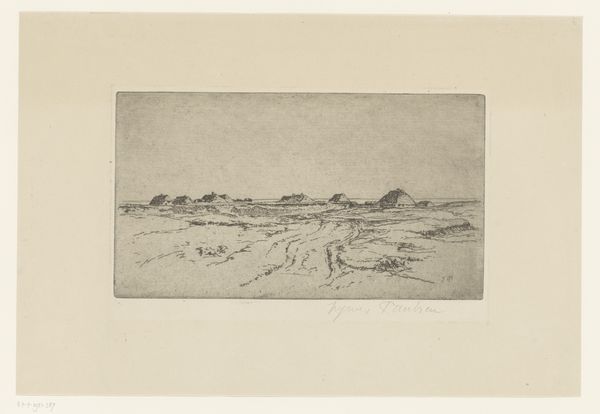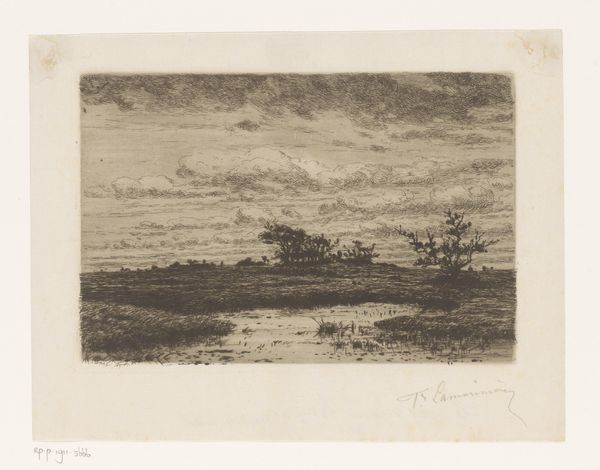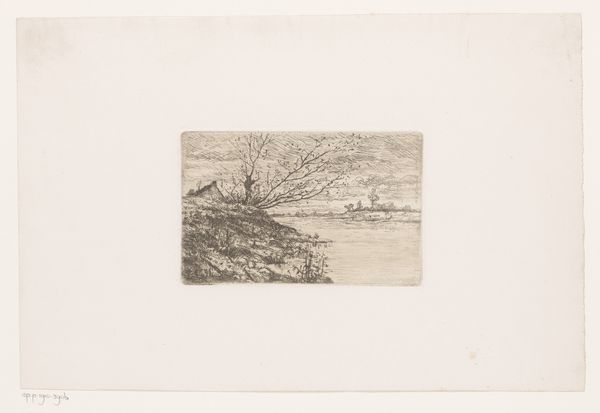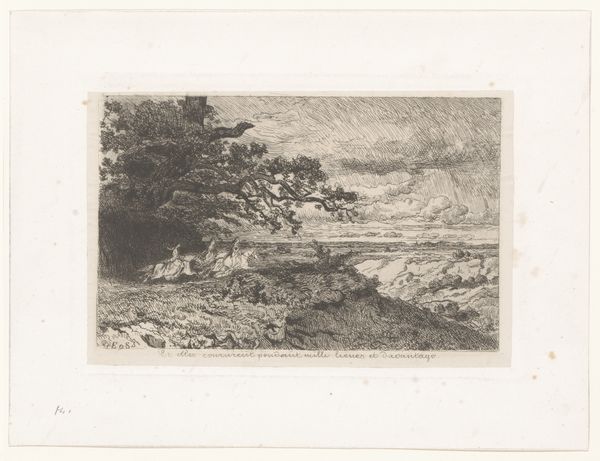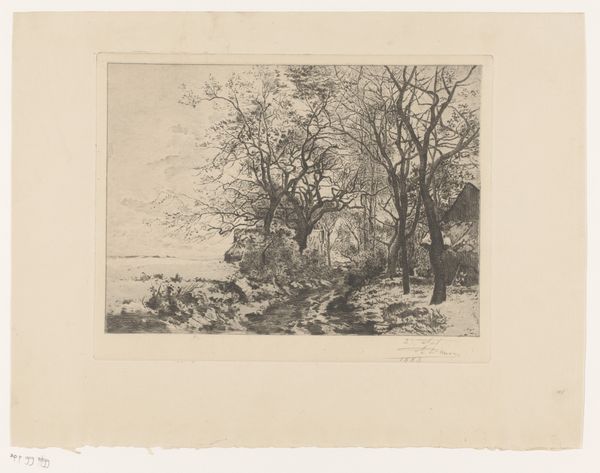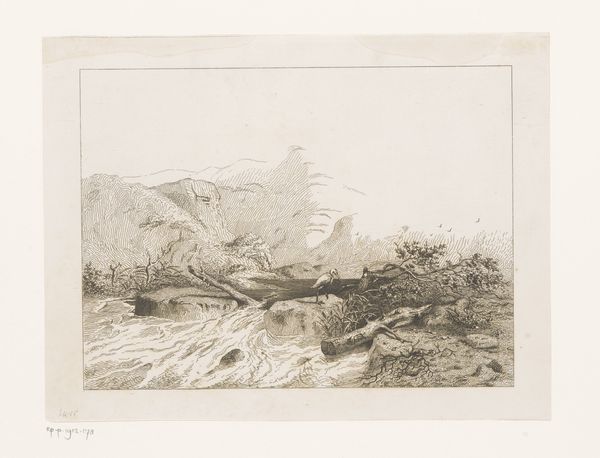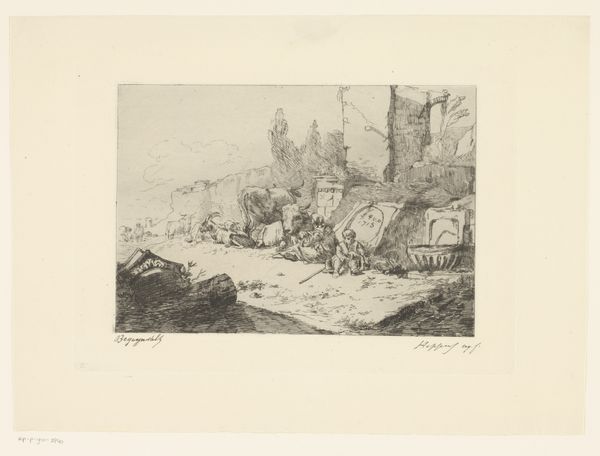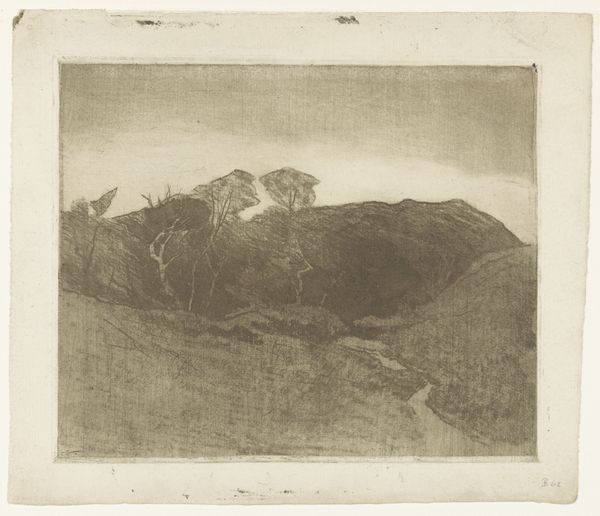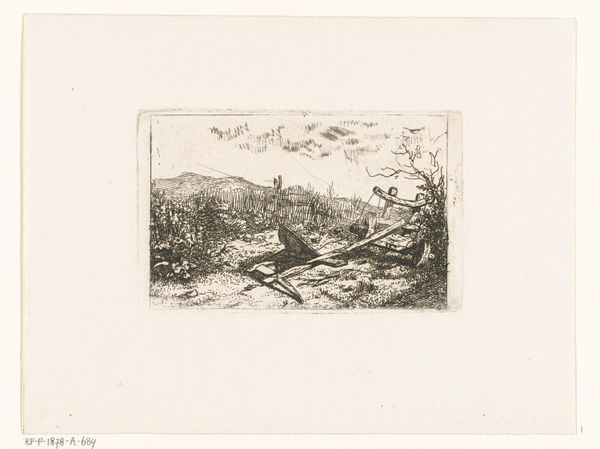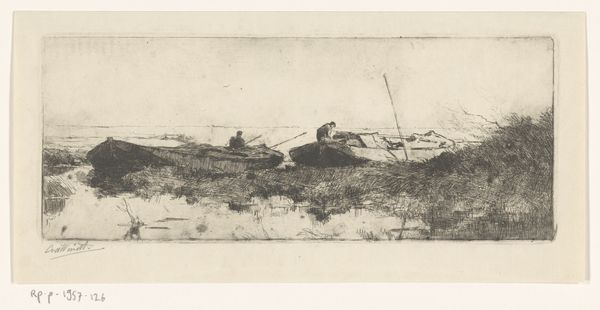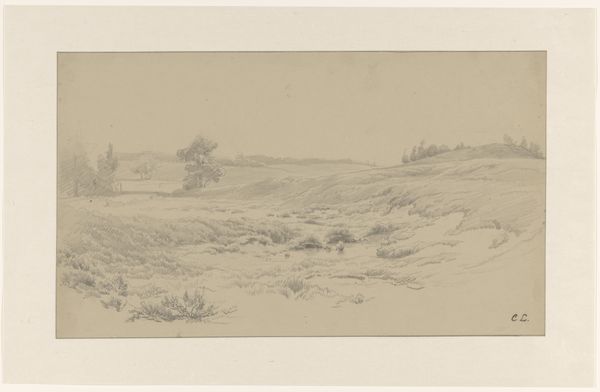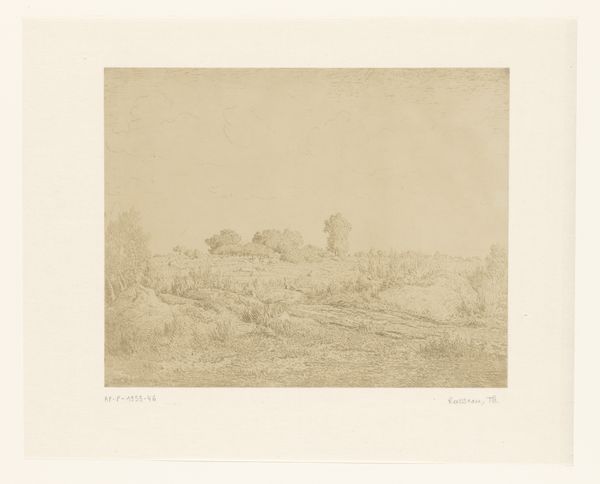
Dimensions: height 290 mm, width 375 mm
Copyright: Rijks Museum: Open Domain
Editor: This is Eduard August Becht’s “Duinlandschap,” made sometime between 1878 and 1931. It's an etching, so a drawing and a print at the same time, rendered in monochrome. It strikes me as both detailed and desolate. What layers do you see in this piece? Curator: Considering the timeframe and Becht's artistic leanings toward realism and impressionism, this "Duinlandschap" allows us to interrogate the relationship between artistic expression and socio-political consciousness. Dune landscapes were often depicted as sites of leisure, yet simultaneously, these areas were experiencing increasing industrialization and urbanization. Where do you think Becht positions himself within these competing narratives? Editor: I suppose I hadn’t thought of it like that! I was only considering the art historical elements. It hadn’t occurred to me that landscape could be politicized. I guess I'm seeing it now in the tension between the untouched wildness and a suggestion of…encroachment? Curator: Precisely. What societal changes do you believe were beginning to encroach during this period that artists would subtly critique in their depictions of nature? This isn't simply a representation of the land. Editor: Well, industrialization definitely transformed the landscape. I see that now in this work, especially if you look closely. Maybe that slightly menacing feel comes from the implications of encroaching development and lost spaces. I’m also curious about the almost melancholic feel the monochrome gives to the work; is it fair to ascribe social awareness even to that? Curator: Absolutely! By stripping away color, Becht perhaps asks us to look beyond the picturesque and towards a deeper, perhaps more somber, reading of humanity's relationship with nature. What broader conversations might this etching initiate? Editor: I suppose it reminds us that landscape art isn’t just about pretty views, but can reflect anxiety about social issues too. Thanks, that’s really changed how I see it! Curator: And I appreciate your reminding me that seeing beauty can, itself, be a powerful response and the first step in activating further critical thinking.
Comments
No comments
Be the first to comment and join the conversation on the ultimate creative platform.


